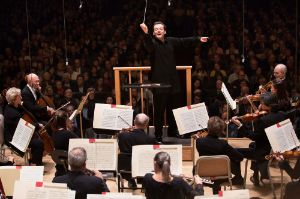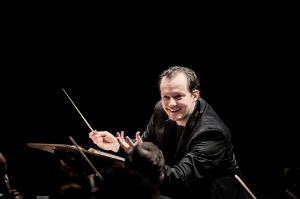Concert | Visiting orchestras / Gustav Mahler
Boston Symphony Orchestra
Visiting: Boston

Staircase, Old State House, Boston © Wikimedia Commons
The Boston Symphony Orchestra is one year older than the Berliner Philharmoniker. They share in common their early years in the aesthetic radius of Johannes Brahms; Arthur Nikisch had a lasting influence on both orchestras as chief conductor. Their developmental paths diverged following World War I. The Bostonians turned their attention towards the sound ideals of French music and developed an orchestral virtuosity that soon became their trademark. During the Nazi period, Berliners and Bostonians stood opposite one another like antipodes: the Americans performed works that disappeared from the “Reichsorchester” programme, and they gave commissions to composers persecuted by the Nazis.
The BSO’s attitude towards Gustav Mahler’s music fluctuated between proximity and distance. Mahler, his former assistant Bruno Walter and his Dutch friend Willem Mengelberg were considered as potential chief conductors; none of them became one. Representing Mahler’s profile in the end were Erich Leinsdorf (chief conductor 1962–69), an artist with roots in the Mahler tradition, and Bernard Haitink (first guest conductor 1995–2004), an important Mahler interpreter who gave the orchestra his own artistic impulses during the post-war period. A convincing Mahler interpretation turned out to be the decisive factor for Andris Nelsons to be appointed James Levine’s successor as music director. They come to the Musikfest with Gustav Mahler’s arguably most dramatic symphony, the Sixth, with its tremendous tension between the hardness of the outer movements and the melancholy but, at the same time, luminous beauty of the slow movement.
Gustav Mahler [1860–1911]
Symphony No. 6 in A minor [1903/04]
1. Allegro energico
2. Scherzo. Wuchtig
3. Andante moderato
4. Finale
Boston Symphony Orchestra
Andris Nelsons conductor
A Berliner Festspiele / Musikfest Berlin event

